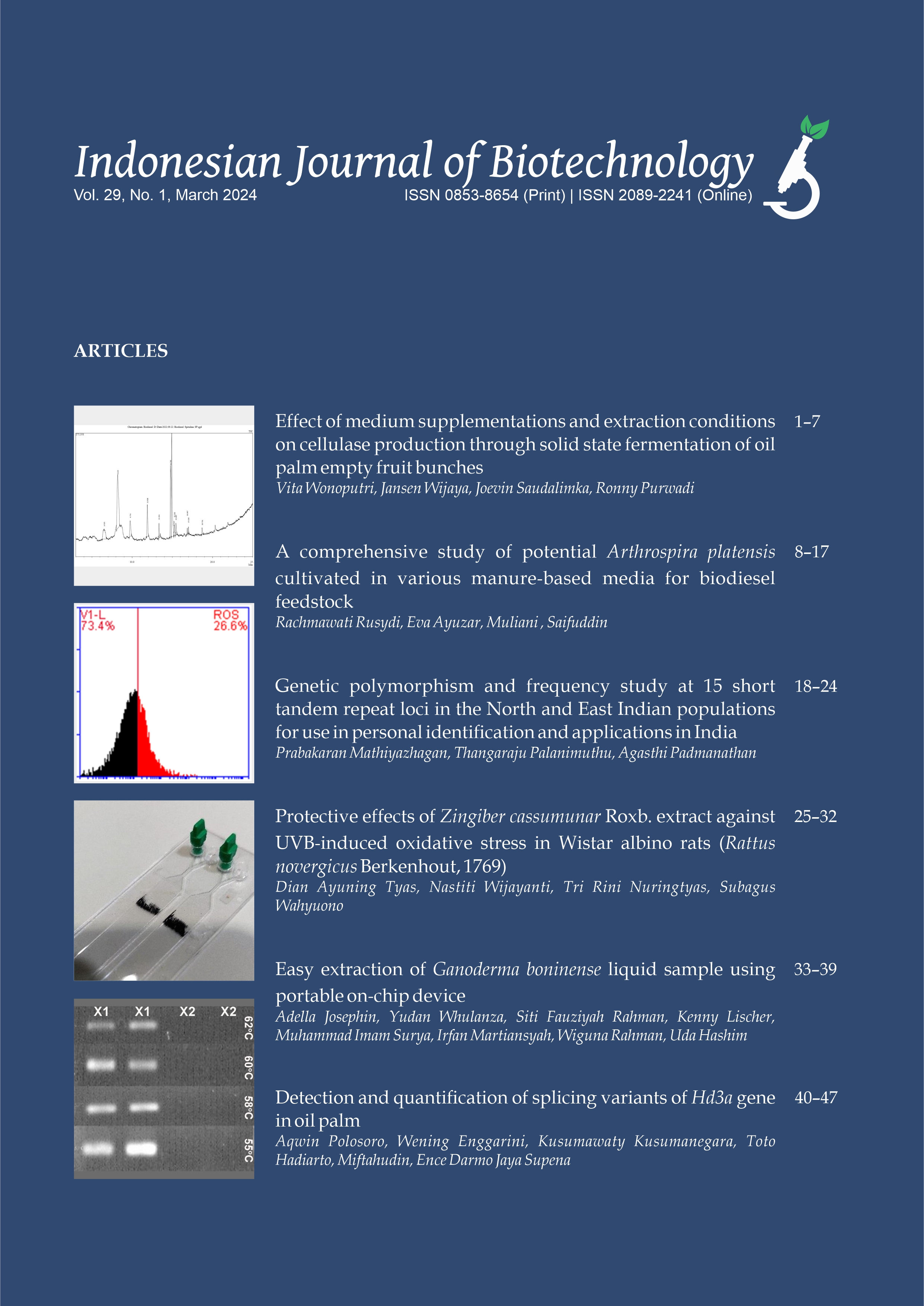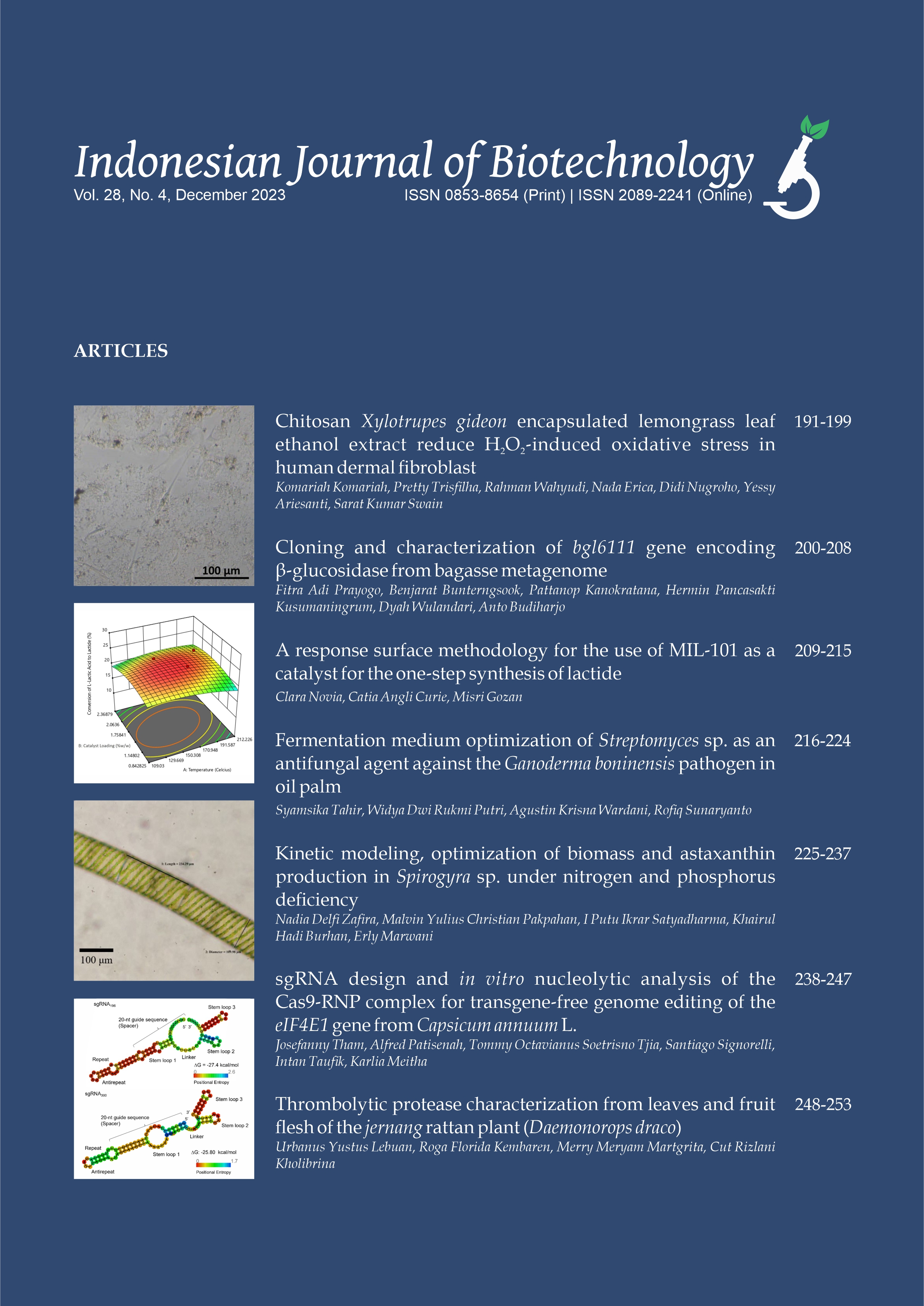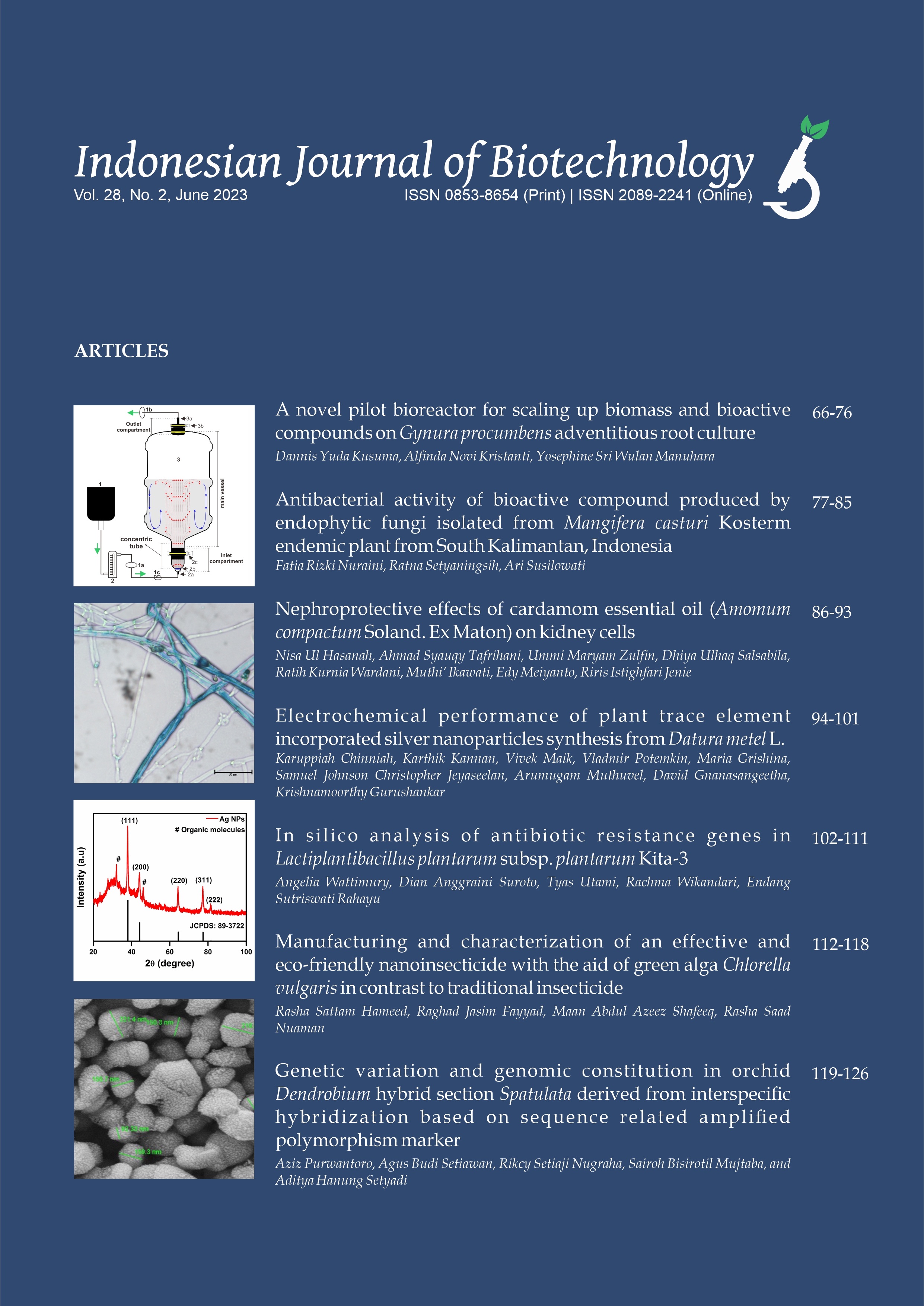Cloning and Sequencing cDNA Encoding for Rhoptry-2 Toxoplasma Gondii Tachyzoite Local Isolate
Wayan T. Artama(1*), Yulia Sari(2), Didik Tulus Subekti(3), Soenarwan Hery Poerwanto(4), Jarot Subandono(5)
(1) Research Center for Biotechnology, Gadjah Mada University, Yogyakarta 55281, Indonesia.Faculty of Veterinary Medicine, Gadjah Mada University, Yogyakarta 55281, Indonesia
(2) Research Center for Biotechnology, Gadjah Mada University, Yogyakarta 55281, Indonesia.Faculty of Biology, Gadjah Mada University, Yogyakarta 55281, Indonesia
(3) Research Institute for Veterinary Science, Bogor, Indonesia
(4) Faculty of Biology, Gadjah Mada University, Yogyakarta 55281, Indonesia
(5) Faculty of Medicine, University of Surakarta, Indonesia
(*) Corresponding Author
Abstract
Keywords
Full Text:
PDFReferences
Ajioka, J.W., Fitzpatrick J.M., and Reitter, C.P., 2001. Toxoplasma gondii genomics: Shedding light on pathogenesis and chemotherapy. http://www-ermm.cbcu.cam.ac.uk
Alexander, J., Jebbari, H., Bluethmann, H., Satoskar, A., and Roberts, C.W., 1996.
Immunological control of Toxoplasma gondii and appropriate vaccine design. In U. Gross, ed., Current topics in microbiology and immunology. Berlin, Heidelber: Springer-Verlag. pp.183- 195.
Ashburn, D., 1992. History and general epidemiology. In Ho-Yen, D.O. and Joss, A.W.L., eds. Human Toxoplasmosis. New York: Oxford University Press. 1-22.Cesbron-Delauw, M.F., 1996. Role of secretory dense granule organelles in the pathogenesis of toxoplasmosis, In U. Gross, ed., Toxoplasma gondii. Berlin, Heidelberg: Springer-Verlag, pp.59-64.
Dubey, J.P., Lindsay, D.S., and Speer , C.A., 1998. Structures of Toxoplasma gondii tachyzoites, bradyzoites, and sporozoites and biology and development of tissue cysts. Clin. Microbiol. Rev., 267-299
Dutta, C., Grimwood, J., and Kasper, L.H., 2000. Attachment of Toxoplasma gondii to a specific membrane fraction of CHO cell. Infect. Immun., 7198 – 7201.
Fuentes, I., Rubio, J.M., Ramirez, C., and Alvar, J., 2001. Genotypic characterization of Toxoplasma gondii strains associated with human toxoplasmosis in Spain direct analysis from clinical samples. J. Clin. Microbiol., 1566-1570
Gazzinelli, R.T., Amichay, D., Sharton- Kersten, T., Grunwald, E., Farber, J.M., and Sher. A., 1996. Role of macrophage-derived cytokines in the induction and regulation of cell- mediated immunity to Toxoplasma gondii. In U. Gross, ed., Current topics in microbiology and immunology. Berlin, Heidelberg: Springer-Verlag. pp.127-136.
Guanjin, C., Hong, G., Fangli, L.U., and Huaqin, Z., 2001. Contruction of a recombinant plasmid harbouring the rhoptry protein gene of Toxoplasma gondii and preliminary observations on DNA immunity. J. Chin. Med., 114 (8), 837 – 840.
Pfrepper, K.I., Enders, G., Gohl, M., Krczal, D., Hlobil, H., Wassenberg,D., and Soutschek, E., 2005. Seroreactivity to and avidity for recombinant antigens in toxoplasmosis. Clin. Diagn. Lab. Immunol., 12 (8), 977–982.
Sibley, L.D. and Howe, D.K. 1996. Genetic basis of pathogenecity in toxoplasmosis. In: Current Topics in Microbiology and Immunology., Gross, U. (ed.). Berlin, Heidelberg: Springer- Verlag. pp.3-13.
Vercammen, M., Scorza, T., Huygen, K., De Braekeleer, J., Diet, R., Jacobs, D., Saman, E., and Verschueren, H., 2000. DNA vaccination with genes encoding T. gondii antigens GRA1, GRA7 and ROP2 induces partially protective immunity against lethal challenge in mice, Infec. Immun, 68, 38- 45.
Yamamoto, J.H., Vallochi, A.L., Silveria, C., Filho, J.K. Nusenblatt, R.B., Neto, E.C., Gazzinelli, R.T., Belfort, R., and Rizzo, L.V., 2000. Discrimination between patients with acquired toxoplasmosis and congenital toxoplasmosis on the basis of the immune response to parasite antigens. J. Infect. Dis. 181, 2018 – 2022.Article Metrics
Refbacks
- There are currently no refbacks.
Copyright (c) 2015 Indonesian Journal of Biotechnology









